Another treasured history lesson for us from the annal of board war game simulations. What a fabulous post. Read On and Learn!
THE ROADS FROM SMOLENSK: SPI, DUNNIGAN, AND THE ‘PANZERGRUPPE GUDERIAN’ LEGACY
Back in 1976, Jim Dunnigan’s simple but wonderfully evocative simulation of the 1941 Battle of Smolensk, PANZERGRUPPE GUDERIAN, was one of several candidates in the “Best Strategic Game” category of the Charles Roberts Awards. Why an obviously operational-level simulation should ever have been nominated for consideration in the “strategic” game category, I have no idea; and apparently, neither did a substantial number of those who took the time to cast ballots in 1976. Moreover, besides having his game oddly mislabeled, Jimmie’s design also had the bad luck to be matched against John Edward’s hugely popular, ‘THE RUSSIAN CAMPAIGN’; and, whatever the respective merits of the two games, it was ‘THE RUSSIAN CAMPAIGN’ and not PANZERGRUPPE GUDERIAN that took home the honors that year. To be fair, Edward’s exciting and fun-to-play simulation of the Russo-German War (1941-45) actually was strategic in scale, and it certainly deserved its popularity with ordinary gamers; on the other hand, because it was largely a clever rehash of design elements from Charles Robert’s ‘STALINGRAD’ and Dave Williams’ ‘THE BATTLE FOR MOSCOW’, with a few “Stukas” thrown in to make the Russian player’s life miserable, it also really couldn’t be said to have “moved the ball forward” when it came to the field of conflict simulation design. Thus, if the whole awkward issue of arbitrary awards categories is put aside, a pretty strong argument can be made that the wrong game actually took home the designer laurels in 1976. And even after all these years, I continue to hold to this view because — at least when it comes to the sheer number of exciting new simulation concepts that it introduced in 1976 — PANZERGRUPPE GUDERIAN was simply much more innovative than its competition.
INTRODUCTION
In the course of preparing my recent profile ofTHE NEXT WAR, I was unexpectedly struck by the fact that this SPI simulation of a hypothetical 1970’s era NATO-Warsaw Pact clash, in spite of its complex and richly-detailed (air-ground-sea) game narrative, was yet another example of a design based, at least loosely, on the very successful — and, I should add, astonishingly versatile — PANZERGRUPPE GUDERIAN (PGG) game platform. This minor epiphany started me thinking about the many other titles that I have encountered, over the years, that have borrowed at least some of their key design elements from Jim Dunnigan’s ground-breaking 1976 treatment of “operational-level” armored warfare on the Eastern Front. The list of the PGG inspired games that I was able to quickly cobble together (and which follows) is hardly complete, but it is, nonetheless, illustrative of just how consequential the basic PANZERGRUPPE GUDERIAN game engine has been when it comes to the work of a number of other game designers, both inside and outside the corporate coccoon of (the old) SPI. Moreover, I would go even farther and say that, while a number of other simulation platforms have emerged — in the decades since Dunnigan’s game on the 1941 Battle of Smolensk first saw print in 1976 — that succeed in depicting at least some of the important features of large-scale mechanized combat operations; it is also a fact that, although some of these newer ideas have been interesting and a few have actually been quite clever, the PGG game system continues to be both a popular choice with many players and an important influence on contemporary game designers.
SETTING THE SCENE: SPI DURING THE “DUNNIGAN-SIMONSEN” ERA
Simulation Publications Inc. (SPI), particularly during its so-called “golden” age (1972-1982) when James Dunnigan (head designer) and Redmond Simonsen (art director) were at its helm, was the most prolific wargame publisher of its day.
However, SPI was also — for a variety of reasons (some deserved, some not) — a perennial target of criticism from a lot of different quarters within the wargaming hobby. Competing game publishers — the “Boys in Baltimore” being one especially obvious example — accused SPI of being a “by-the-numbers” game mill which, they claimed, favored quantity over quality: an oddly disingenuous allegation given the number of game designs (e.g., titles like PANZERBLITZ, FRANCE, 1940, ORIGINS OF WORLD WAR II,PANZER ARMEE AFRIKA, FREDERICK THE GREAT, PANZERGRUPPE GUDERIAN, andCONQUISTADOR) that Avalon Hill’s management purchased from SPI over the years and then reissued under their own label. Interestingly, free-lance and amateur game designers were another faction that tended to be skeptical of, if not downright hostile to, Dunnigan and company, mainly because of the “closed shop” nature of SPI’s highly-structured design and development processes. And last, but not least, there were the numerous player critics — mainly disgruntled (and vocal) Strategy & Tactics (S&T) subscribers — whose numbers seemed to ebb and flow (I regularly moved in and out of this group, myself) based on their freshly-minted opinions of the latest S&T magazine game.
Some of the flak directed at SPI, of course, was patently unfair, but some of it was not. Certainly, given the pressure to publish sixS&T magazines (with insert games) a year — in addition to SPI’s many other publishing projects (i.e., non-insert games along with the bi-monthy Movesand Ares “niche” magazines which were launched on the heels of S&T) — it was inevitable that Dunnigan and company were going to miss the mark on occasion (think: SCRIMMAGE, THE FALL OF ROME, DIXIE, INVASION AMERICA, AFTER THE HOLOCAUST, and ARMADA, just to name a few of its more notorious “dogs”); nonetheless, given SPI’s perpetually precarious financial situation, it is truly amazing that the company was able to continue to limp along from year to year and, in so doing, to put out as many good games as it did. Moreover, when it comes to criticism of Dunnigan’s preference for keeping design and development “in house”, what tends to be forgotten is that, on occasion, outside designs did make it into print under the SPI label. And although company policy tended to insure that independent designs were the exception rather than the rule, it is also a fact that outsiders like Dave Williams, James Goff, Phil Orbanes, and John Prados — at one time or another, and with varying degrees of success — all saw their games developed, play-tested, and published by SPI. The upside of the Dunnigan approach (incestuous though it may have been) was that it offered a large number of designer “wannabes” what, at the time, was something akin to a game design apprenticeship program. And a surprising number of relative unknowns can be said to have really made their game designer “bones” at SPI. Thus, now-familiar hobby names like John Young, Richard Berg, David Isby, Mark Herman, Kevin Zucker, Irad Hardy, Joe Angiolillo, Frank Davis, Joe Balkoski, Brad Hessel, and Stephen B. Patrick (just to mention a few) all, more or less, got their start at SPI.
Unfortunately, in spite of its dominant position in the “historical” simulation marketplace in the 1970’s, SPI was slow (when it didn’t drop the ball completely) to recognize and act on new trends in the larger “adventure gaming” universe. In retrospect, this was a major misstep because it meant that innovative new gaming concepts and mediums such as: computer-based games; role playing games (i.e., RPGs like Gary Gygax’s “cash machine”, DUNGEONS & DRAGONS); card-based conflict simulations (e.g., UP FRONT!,MAGIC, ATTACK SUB, and DOWN IN FLAMES), and card-driven games (CDGs) — whether as a result of tunnel vision on the part of Dunnigan and company, or as a misplaced concession to what was then perceived by SPI’s management to be the traditional “map and counters” historical biases of the publisher’s core constituency (the S&Tsubscribership) — were all left for other game companies to design and market.
Now, of course, it is easy to look back at SPI’s fascinating, if somewhat spotty, history — with, of course, the benefit of several decades’ worth of 20/20 hindsight — and identify some of the main reasons for the company’s ultimate failure. They are really not all that difficult to spot.
Certainly, the emergence of affordable personal computers transformed the popular view both of “games” and “game play” for millions of consumers, and, in the process, dealt a severe blow to traditional forms of recreational board gaming. In addition, the moribund (and uninspired) nature of SPI’s business model — which focused more and more, as time went by, on capturing (in the finest “buggy whip” manufacturers’ tradition) an increasing share of a steadily shrinking market demographic — was, along with the proliferation of innovative new types of “adventure games” and conflict simulations, an equally important contributor to the company’s troubles. Finally, of course, a substantial portion of the blame for SPI’s financial collapse — followed by its controversial “distress” sale to Tactical Studies Rules (TSR) — must be laid at the feet of James Francis Dunnigan. After all, it was Dunnigan who, in spite of his indisputable talent as a designer of conflict simulations, nonetheless — whether because of his “top-down” leadership style, his ambitious (if arguably self-serving) desire to transform SPI into a combination game publisher/think tank, or his dogged refusal to experiment with non-traditional gaming formats — clearly failed to provide the enterprise that he had founded with effective stewardship when times, and the “adventure gaming” market, got tough.
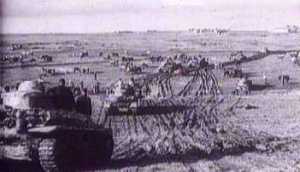 |
| German tanks move to the Russian front in WWII. |
Still and all, if SPI’s approach to game publishing had its faults, it also had its advantages. One of those advantages, of course, was that it broke the pattern first established by Avalon Hill’s Charles Roberts (and continued by Tom Shaw) of only publishing a couple of new game titles a year. If SPI was nothing else, it was prolific; and because of this fact, it was able — one might even say: obliged — to tackle subject matter that, constrained by traditional marketing and production cost concerns, its older, more hide-bound competitor in Baltimore tended to avoid. Moreover, because of the economics of game publishing and the constant pressure of magazine deadlines, SPI very quickly moved to an “understudy” system of game development: a system wherein Dunnigan, as head designer, would come up with the essential elements for a new game platform on some popular (based on S&Tsubscriber feedback) simulation topic; and, if the initial design was well-received, he would often then delegate follow-up projects dealing with similar historical situations to others in the SPI designer “bull pen”.
 |
| Heinz Guderian |
Successful examples of SPI’s systematic reuse of Dunnigan-originated game engines abound; however, the “grand daddy” of them all has to be the NAPOLEON AT WATERLOO (NAW) Grand Tactical System. This simple, but robust game platform ended up providing the basic design templates for AUSTERLITZ, theNAPOLEON AT WAR quadri-game,NAPOLEON’S ART OF WAR, the NAPOLEON’S LAST BATTLES quadri-game, BLUE & GRAY I and II (both quadri-game treatments of critical American Civil War battles), 6th FLEET,BATTLE FOR GERMANY, and a few other SPI titles, as well. Another of Dunnigan’s more ingenious (and elegant) designs — and one of my personal favorites — was LEIPZIG which, although sharing some similarities with NAWin terms of its subject matter, took a more abstract, strategic approach to 19th century warfare. Spin-offs of the original LEIPZIGdesign ultimately came to include titles such as LA GRANDE ARMÉE, 1812, THE FRANCO-PRUSSIAN WAR, LEE MOVES NORTH, and THE WILDERNESS CAMPAIGN. Moreover, there are, it should be noted, actually quite a few Dunnigan game platforms that ended up being used both inside and outside SPI by other designers as game templates. Nonetheless — in my view, at least — the most successful (and widely-copied) of them all was (and is) the “mechanized operations” simulation architecture introduced with the publication, as a “free” magazine game in S&T #57, of PANZERGRUPPE GUDERIAN in 1976. And, although the lack of pre-publication fanfare that preceeded the mailing of S&T #57 suggests that no one at SPI had particularly high hopes for PGG or the game system that it inaugurated; in its own way, PANZERGRUPPE GUDERIAN turned out to be as ground-breaking — in its depiction of operational-level mechanized combat — as Dunnigan’s earlier, 1970 design,PANZERBLITZ, had been for tactical armored combat.
MECHANIZED COMBAT AND THE EVOLUTION OF THE PANZERGRUPPE GUDERIAN GAME SYSTEM
Most new ideas, however fresh or spontaneous they may appear at first glance, usually represent an evolutionary synthesis of previous ideas; in other words, when it comes to most things, history really is “preamble”. Such is certainly the case when it comes to the design and development of conflict simulations. Hence, it should not be at all surprising that many of the innovative design features that James F. Dunnigan mixed and matched in order to imbue PANZERGRUPPE GUDERIAN with its historically-persuasive, but still highly-playable and exciting game dynamic, didn’t suddenly just appear out of nowhere. On the contrary, if one knows where to look, the PGG game platform actually has a short and fairly easy-to-trace geneology.
Like the historical basis for the game itself, the origins of the PGG Game System seem to have mainly emerged from Dunnigan’s repeated attempts to depict events on the Eastern Front during World War II. In point of fact, the roots of PANZERGRUPPE GUDERIAN can reasonably be said to date back to SPI’s first attempt at simulating the German 1943Zitadelle Offensive, KURSK (with its introduction of the post-combat mechanized movement phase), in 1971. [FRANCE 1940 could plausibly be said to fall in the same time-frame as KURSK, but because the rights to this “quirky” Dunnigan design were quickly sold to Avalon Hill, it is usually skipped-over in favor of its East Front cousin]. Yet another refinement to Dunnigan’s concept of mechanized warfare was added in 1972 withTHE MOSCOW CAMPAIGN (this was the designer’s first crude attempt at modelling overrun combat); then came EL ALAMEIN and THE ARDENNES OFFENSIVE (both of which severely curtailed operational flexibility by adding “sticky” zones of control) in 1973. WAR IN THE EAST, 1st ed. continued this developmental trajectory when it appeared in 1974 (it introduced a more sophisticated treatment of overruns as a function of movement). Two years later INVASION AMERICA (with its use of “untried” unit combat strengths) appeared; shortly thereafter, Dunnigan’s still-evolving ideas about armored combat operations finally came together in PANZERGRUPPE GUDERIAN when this humble “insert” game forS&T #57 burst onto the gaming scene in 1976. The rest, as they say, is history.
THE MANY DIFFERENT ROADS FROM SMOLENSK
If, prior to its publication, Dunnigan and company had not seen anything particularly noteworthy in the PANZERGRUPPE GUDERIAN design, the game’s warm reception byS&T’s readership quickly changed their thinking. And, like a small boy with a new hammer who pounds on everything within reach, Dunnigan — either directly or by proxy — enthusiastically applied the PGG design treatment to a lot of pending SPI projects which, in some cases, had languished on his “to do list” of possible game titles for years. Thus it was that, in the space of the next few years, eleven new PGG based titles (fourteen, if theVICTORY IN THE WEST games are counted) — from S&T “insert” games to soap-boxmonsters — made the journey, at SPI, from design and development to print. In and of itself, this widespread use, by Dunnigan and his various understudies, of the innovative new PANZERGRUPPE GUDERIAN simulation platform was hardly surprising; what was surprising, given the PGG game engine’s original focus and subject matter, were the various types (and scales) of conflict situations onto which it was ultimately grafted. In fact, one could almost say, in retrospect, that if a potential conflict simulation design included tanks, someone at SPI would at least try the PGG game engine out to see if it could be made to fit. It should be noted that this “scatter-shot” design approach did not always work out; nonetheless, it succeeded a lot more frequently than many of us would have ever expected. And this is probably something that, in its own right, warrants a little additional elaboration.
When it first appeared back in 1976, PANZERGRUPPE GUDERIAN was, in terms of its overall scale, a fairly typical operational-level SPI game; which is to say: hexes were 10.5 kilometers from side-to-side; game turns represented two days of real time; and combat units were either regiments or divisions. However, its seemingly familiar Russo-German War game narrative differed significantly from almost all of its SPI predecessors [the one possible exception to this being ‘THE MOSCOW CAMPAIGN’] in the fact that the two opposing armies (and the player turn sequences associated with those two armies) were asymmetrical. This asymmetry was no small matter: the “untried” nature of all Red Army combat units, the important differences in the supply requirements of the two sides (Soviet supply was headquarters-based, German supply was not), and the total absence of a Russian “mechanized” movement phase all combined to give PGG — at least in the eyes of its many fans, me included — a unique and very satisfying East Front historical “feel”. It was also unpredictable, challenging (particularly for the Russian player), and marvelously playable. If the PGG game engine had any limitation at all, it was that it seemed to be almost too well-suited to World War II combat operations on the Russian Front. As subsequent events soon demonstrated, however, this was not an opinion that was widely-held at SPI.
The SPI Branch of the PANZERGRUPPE GUDERIAN Family Tree
If Dunnigan and company were surprised by the warm reception that the S&T #57 “insert” received from the gaming public, they were, nonetheless, quick to capitalize on the popularity of the PGG game platform; although not initially in the way that many of us, who were die-hard East Front afficianados, expected. In fact, as things turned out, the first batch of games to follow in the wake of PANZERGRUPPE GUDERIAN were — at least for those of us on the outside of SPI looking in — virtually all surprises.
In 1977, SPI published, as part of its regular quota of fresh releases, four titles — twoS&T magazine titles, one regular-sized “flat-pack” game, and one monster game) — all of which were based (however loosely) on the PANZERGRUPPE GUDERIAN game system. This brand-new lot of PGG inspired offerings included, in no particular order: Brad Hessel’s “insert” game on the Normandy breakout, COBRA (scaled at 3.2 kilometers per hex, three days per game turn, and regiment/brigade/division); Irad Hardy’s perversely-frustrating — the game was both open-ended and unwinnable —S&T magazine treatment of the (at the time, still raging) armed struggle between the black insurgents of the ANC (the African National Congress) and the white-dominated South African government,SOUTH AFRICA (60 kilometers per hex, weekly game turns, and company/battalion/regiment strength combat units); Jim Dunnigan’s operational simulation of a hypothetical clash between NATO and Warsaw Pact forces in the Fulda Gap region of Germany set sometime in the late 1970’s, FULDA GAP (scaled at 10 kilometers per hex, 24 hours per game turn, with regiment/brigade strength units); and last but not least, Jimmy’s grand-tactical treatment of the “Battle of the Bulge”, ‘WACHT AM RHEIN’(one mile per hex, three game turns per 24 hours, and company/battalion/regiment strength combat units). As might be expected, popular opinions of these titles varied greatly: COBRA and WACHT AM RHEIN were generally well-received (at least among the gamers with whom I had personal contact); SOUTH AFRICA and FULDA GAP, however, were not. Moreover, a substantial number of SPI’s regular customers (me included) were both a bit confounded and more than a little disappointed by the the complete absence of any new PGG based East Front games; and these player sentiments (gamers being a vocal lot) were not borne in defferential silence, but were quickly made absolutely clear — both through magazine “feedback” and through private letters — to the “powers that be” at SPI. Whether this surge in customer discontent actually had any effect on Dunnigan and company is, of course, impossible to know; nonetheless, SPI, for whatever reason, did — in terms of pending titles still in the development “pipeline” — announce something of a publishing course correction in time for the coming year.
If the PGG based SPI offerings of 1977 seemed to completely ignore the East Front cachet of Dunnigan’s original design, those of 1978 did not. In fact, of the five SPI titles designed around the PANZERGRUPPE GUDERIAN game template that went to the printer in 1978, three were simulations of major actions from the Russo-German War (1941-45). Somewhat surprisingly, however, was the fact that there was only one magazine “insert” in this lot, and that was Stephen B. Patrick’s simulation of the Soviet offensive in southern Russia in spring of 1942, KHARKOV (scaled at 6.9 kilometers per hex, 24 hours per game turn, and regiment/division strength combat units). A second East Front game that was considerably bigger in scope was Brad Hessel’s much anticipated and — as it turned out — notoriously flawed DRIVE ON STALINGRAD(which used 22 kilometer hexes, weekly game turns, and regiment/division sized units). The third Russian Front title in this batch of offerings was Joe Angiolillo’s treatment of the “last gasp” attempt by the Wehrmacht to capture Moscow in the winter of 1941/42,OPERATION TYPHOON. This game, like DRIVE ON STALINGRAD, was a quasi-monstergame with multiple map sections and double the standard SPI compliment of unit counters (the game’s scale — which almost shifted its feel from the “operational” to the “grand tactical” — was 2.7 miles per hex, 24 hours per game turns, and battalion/regiment/division sized combat units). [Oddly enough, although popular reaction to ‘TYPHOON’ tended to be mixed (players seemed to either love it, or hate it), the several clever new touches added to the basic PGG game system by the designer (just one example being the determination of combat strengths through random “chit draws”) actually spawned a whole new line of S&T magazine games, the VICTORY IN THE WESTSeries. This family of PGG offshoots, over time, ultimately grew to include a pair of designs by Joe Balkoski, ‘PATTON’S THIRD ARMY’ (1980) and ‘OPERATION GRENADE’ (1981); as well as a third game, designed by Dick Rustin, ‘SICILY’, also published in 1981.]The remaining two PGG inspired games published by SPI in 1978 were both hugely ambitious monster games. One was Jim Dunnigan’s truly massive (and deeply layered) simulation of a hypothetical, continent-wide 1970’s NATO-Warsaw Pact clash, titled somewhat omminously, THE NEXT WAR (this multi-map “opus” was scaled at 14 kilometers per hex, game turns represented 2 days of real time, and combat units — of which there seemed to be thousands — were brigade/division strength. The other was Joe Balkoski’s equally massive depiction of the 1944 Normandy landings and the follow-up battles that were fought to expand the Allied lodgement, ATLANTIC WALL; a design that turned out — much like its cousin, WACHT AM RHEIN — to be terrific in concept, but somewhat disappointing in actual execution (map scale was 1 kilometer per hex, there were four game turns (3 daylight and 1 night) per 24 hour period, and combat units were company/battalion sized).
In view of the fresh and oftentimes innovative SPI titles — based on thePANZERGRUPPE GUDERIAN design platform — that had appeared in 1977 and 1978, expectations among players who were fond of the PGG system (like me) were relatively high when it came to the SPI game offerings for the new year. That being said, for those of us who had become fans of the steadily growing family of PGG based games, 1979, when it finally arrived, was — in terms of its good and bad news — a curiously mixed year. On the positive side, the new year saw the publication of FOUR BATTLES OF ARMY GROUP SOUTH: which, whatever else one might think of it, turned out to be the one and only “quadrigame” ever offered by Dunnigan and company which used the PANZERGRUPPE GUDERIAN game architecture as its “core” rules system. On the debit side, the four titles that made up ARMY GROUP SOUTH were — except for the already alluded to VICTORY IN THE WEST spin-offs that appeared in 1980 and 81 — also the last of the standard (easily recognizable) PGG inspired titles to be offered by SPI in 1979 or in any of the years that followed.
Interestingly, the four stand-alone games that made up the ARMY GROUP SOUTH package, although somewhat uneven in terms of quality, nonetheless, were all very similar — in both scope and scale — to the original design that had started it all back in 1976. The first of the four was Joe Angiolillo’s depiction of the massive encirclement battle fought near the capital of the Ukraine in the late summer of 1941, KIEV (design scale was 8 kilometers per hex, two days per game turn, and regiment/division sized combat units). The second was John H. Butterfield’s simulation of the first successful Soviet counterattack of the War,ROSTOV (hexes were 17 kilometers from side-to-side, turns represented five days of real time, and combat units were regiment/division sized). KORSUN — the third game in the set — was designed by Steven B. Patrick, with help from Milton and Neil Rosenberg, and dealt with the Red Army’s encirclement of substantial German forces on the southern Dnepr in winter of 1944 (game scale was 7.5 kilometers per hex, two days per game turn, and regiment/brigade/division sized combat units). OPERATION STAR, the last of the four games to make up the ARMY GROUP SOUTH package, was Brent Nosworthy’s treatment of the Soviet winter offensive in February, 1943, and of Manstein’s stunningly successful “back-hand blow” against the advancing Russians (each hex equals 10.5 kilometers, game turns represent five days of real time, and combat units are regiment/division sized).
Although 1979 could logically be said to have represented the “last hurrah” for new SPI designs based on the standard PANZERGRUPPE GUDERIAN game architecture (in any of its several permutations), subsequent events would soon show that other game designers — away from Dunnigan and the feedback-driven development regime at SPI — were not so ready to give up on the PGG game “franchise”. And, perhaps fittingly (if ironically), the first and arguably still one of the very best of these outside designs debuted in the same year that ARMY GROUP SOUTH was published.
New Roads from Smolensk: A Sampling of Non-SPI Games based on thePANZERGRUPPE GUDERIAN Game System
In 1979, a small independent game company, Peoples’ Wargames (PWG), pretty much appeared out of nowhere with a brand new title based on theWACHT AM RHEIN version of thePGG game system: Jack Radey’s richly-detailed and wonderfully-crafted simulation of the large and tactically fascinating 1944 encirclement battle on the Dnepr,KORSUN POCKET (one mile per hex, three game turns (2 daylight and 1 night) per 24 hour period, battalion/regiment sized combat units). Like its SPI “Battle of the Bulge” cousin, KORSUN POCKET was massive in size (multiple map sections, a thick rule book and study guide, and sheet after sheet of counters) and grand tactical in both scale and “feel”; unlike its SPI counterpart, however, Radey’s design was both impressive to look at and actually fun (for both sides) to play. Moreover, although the game’s geneology was obvious, because of the designer’s numerous refinements to the original Dunnigan game platform (particularly as regards the rules governing armored operations) it was more than a mere East Front companion game to WACHT AM RHEIN. Somewhat unexpectedly — at least for an ambitious independent game of its size — it was generally well-received throughout the hobby; and, in fact,KORSUN POCKET ended up being chosen as the Game Designers’ Guild “Select Award” winner for 1979.
And then, in spite of the impressive success of KORSUN POCKET, seemingly nothing …
The 19th century Prussian military theorist, General Carl Von Clausewitz, is said to have caustically observed — while critiquing the writtings of several of his contemporaries — that “it is for each new generation of military thinkers to rediscover the decisive battlefield effect of the flank attack.” This comment by Clausewitz, without stretching its author’s original intent too much, could probably also be applied to the field of game design. Which is to say: ideas and design concepts tend to emerge, enjoy a (usually relatively brief) period of popularity, and then disappear only to resurface again, in a new game, oftentimes years later.
Such has certainly been the case with the PANZERGRUPPE GUDERIAN game system. Whether one picks 1979 (KORSUN POCKET) or 1981 (SICILY), the fact remains that new titles based on the PGG rules package largely disappeared in the years following the publication of ARMY GROUP SOUTH and KORSUN POCKET. [For the purposes of this discussion, I probably should note that I am discounting the reissue (by other publishers) of existing designs; e.g., Avalon Hill redo of ‘PANZERGRUPPE GUDERIAN’, or Decision Games’ overhaul of ‘WACHT AM RHEIN’, just to name two examples.] Like Dunnigan before them, other game designers moved on to experiment with newer, alternative methods of simulating armored combat, and the PGG game engine fell into disuse. Or so it seemed.
Then, in the mid-1990s — as if to prove Clauswitz’ observation regarding “old” ideas and “new” generations correct — thePANZERGRUPPE GUDERIAN game platform reemerged, after a decade and a half in designer limbo, to support Vance von Borries’ and Tony Curtis’ intriguing and highly-playableBARBAROSSA series of brand new titles dealing with operational combat during the Russo-German War (1941-45). Published by GMT Games, the first in this fresh batch of East Front simulations, TYPHOON appeared in 1995; the second, ARMY GROUP SOUTH, in 1996; the third, ARMY GROUP CENTER, in 1998; and the last, ARMY GROUP NORTH, in 2000. Although each of these simulations examined a different aspect of the titanic struggle between Hilter’s Third Reich and Stalin’s Russia, they all were similarly scaled and employed (with the exception of TYPHOON) almost identical design architecture; which is to say: game turns represented two days of real time, hexes were 5 miles from side to side, player turns were asymmetrical, and combat units were battalion/regiment/brigade/division in size.
Interestingly, impressive as it was, the six year burst of creative energy displayed by Vance von Borries and Tony Curtis was not the end of the PANZERGRUPPE GUDERIAN design saga.
In 2006, Multi-Man Publishing (MMP) followed in GMT’s footsteps by introducing Japanese designer Tetsuya Nakamura’s A VICTORY LOST to American wargamers (the game used ten-day game turns, 15 kilometer hexes, a chit-based “Headquarters Activation” subroutine, and battlegroup/division sized combat units). Nakamura’s award-winning simulation of the Red Army’s 1943 offensive to smash Army Group South, codenamed “Operation Saturn”, and of Erich von Manstein’s brilliantly conceived “backhand blow” which saved theWehrmacht in southern Russia from complete disaster, was notable both for its PGGpatrimony, and for the sheer volume of exciting new ideas that the designer managed to successfully graft onto Dunnigan’s thirty-year-old game platform. Three years later, MMP followed up A VICTORY LOST with designer Adam Starkweather’s East Front simulation, A VICTORY DENIED. Based on Nakamura’s hugely successful earlier design, but with a few changes to the rules governing supply and command and control, A VICTORY DENIED simulated Army Group Center’s attempt to seize, and the equally desperate attempt by the Red Army to protect, the Soviet Capital in the summer/fall of 1941.
Finally, although the preceding list of PGG inspired games is fairly extensive, it is virtually certain that it is not complete. Whether because of forgetfulness or ignorance on my part (it is, after all, hard to keep abreast of absolutely every new development in the hobby), I am virtually certain that there are any number of other titles that probably deserve to be included along with those catalogued above. Nonetheless, whatever the flaws in this highly-subjective chronicle of the long and colorful history of Jim Dunnigan’s 1976 brainchild, the fact remains that the PANZERGRUPPE GUDERIAN game system has shown itself to be one of the most versatile and robust in the whole history of conflict simulation design. And, if past events are any guide, its influence on the work of future game designers will probably persist for many years to come.
FINAL THOUGHTS
As anyone who has been involved in wargaming for as long as I have (nearly half a century) will attest, the story of the PANZERGRUPPE GUDERIAN game system, and its decades-long infuence on wargame design is hardly unique. Certainly, there are any number of examples of other game platforms that have demonstrated either the PGGarchetecture’s versatility, its longevity, or both. The LA BATAILLE Series of Napoleonic games from Marshal/Martial Enterprises is one example of a durable game platform — introduced in the early 1970s — that has held up relatively well over the years. Another is the hugely ambitious and surprisingly maleable (consider: DNO/UNT and then NARVIK)EUROPA World War II game system from Game Designers’ Workshop (GDW). Yet a third game system that, in its own way, probably comes closest to matching, if not exceeding, both the long-term success and the sheer versatility of the PGG platform is the “block-based” QUEBEC 1759 game system — a joint creation of three Canadians: Steve Brewster, Tom Dalgliesh, and Lance Gutteridge — which was first introduced by Gamma Two Games (now Columbia Games) back in 1972. Originally a “musket and bayonet” oriented simulation platform, Columbia Games’ signature “block-based” game system has been expanded to cover military situations as diverse as the Roman Civil Wars, Medieval conflicts, and even a number of the major campaigns of World War II.
So, what does all this mean? Only this: that the vast majority of new designs that daily enter the wargaming market actually have relatively long conceptual “tails”; and that, to know the history of the “adventure gaming” hobby is to also know that there is startling little that is truly fresh or innovative when it comes to game design. Even a truly new and ground-breaking game platform like that introduced in GDW’s DRANG NACH OSTEN!(1973) — by Frank Chadwick’s own admission — drew its first whiff of inspiration from Dunnigan’s almost forgotten (and largely unplayable) LOST BATTLES (1971). And I’ll never forget a comment from one of my wargaming friends upon first examining a copy of the then unknown Dalgliesh and company’s QUEBEC 1759. “This looks,” he noted, disbelievingly,” a lot like STRATEGO, with step-reduction, meets RISK. Why the heck didn’t any of us geniuses think of this?” Why, indeed? Particularly when one remembers that the first copy of STRATEGO saw print back in 1947, and the first edition of RISK appeared in 1959.
In the end, I suppose that it is the all-too-rare ability to synthesize a few simple spatial and mathematical concepts into something that is both historically convincing and yet easily understandable (read: playable) that really separates most of us (especially the designer “wannabes”) from the handful of genuinely creative hobby personalities who, each in his own way, has been influential in the ongoing progress of wargame design. And, using this admittedly subjective criteria, I think that James Dunnigan’s seminal design, PANZERGRUPPE GUDERIAN, really stands out. Not only was it a successful game in its own right, but, even more importantly, its robust and amazingly versatile game platform laid the foundation for the marvelous and varied games — often the products of younger designers — which have followed in its wake. And that — at least in the “closeted” world of wargaming — is no small accomplishment.
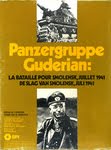
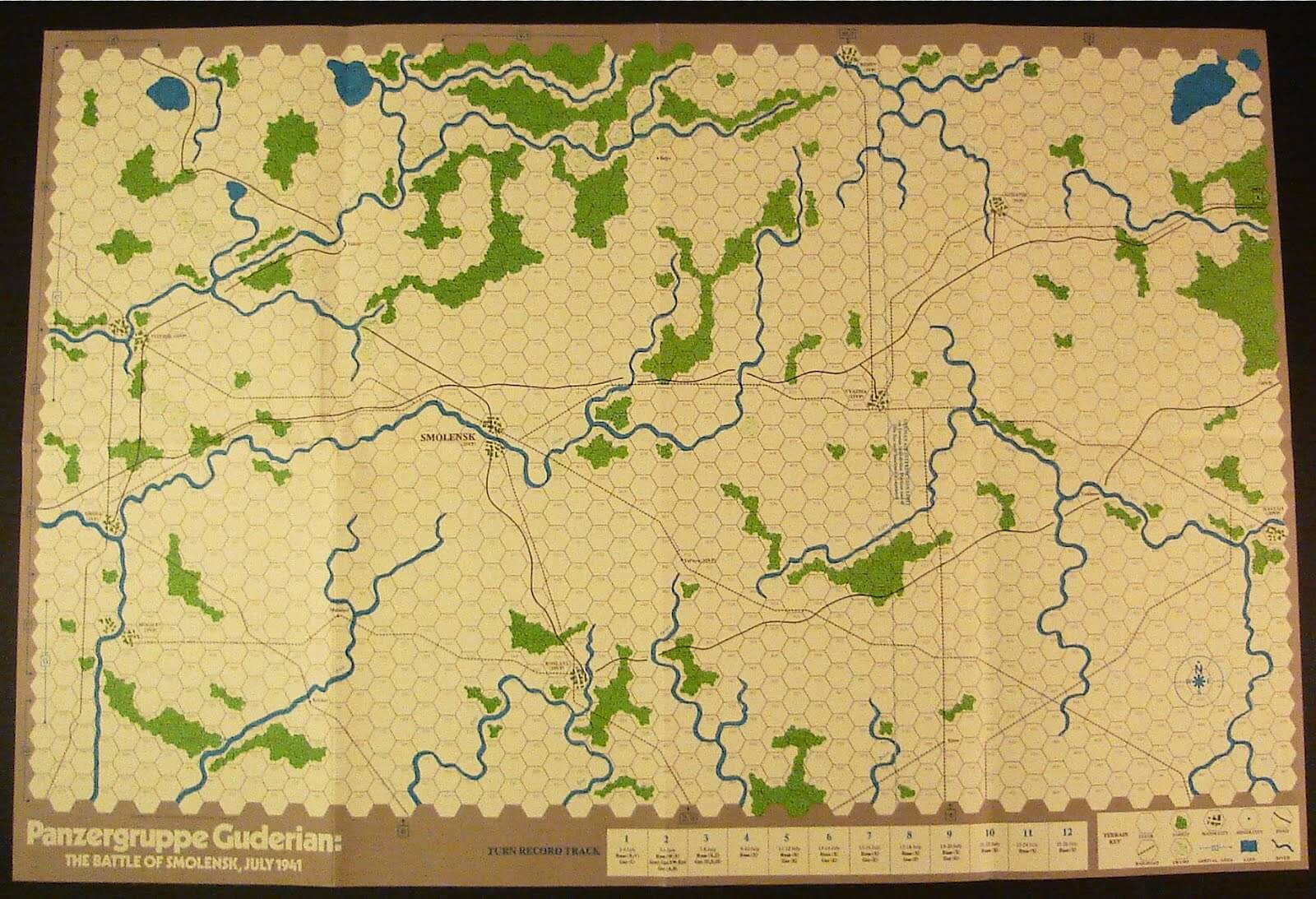


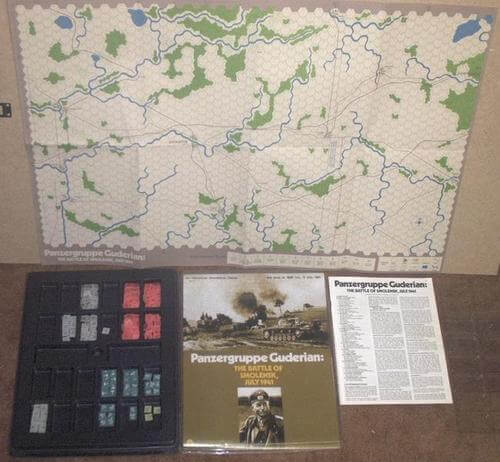
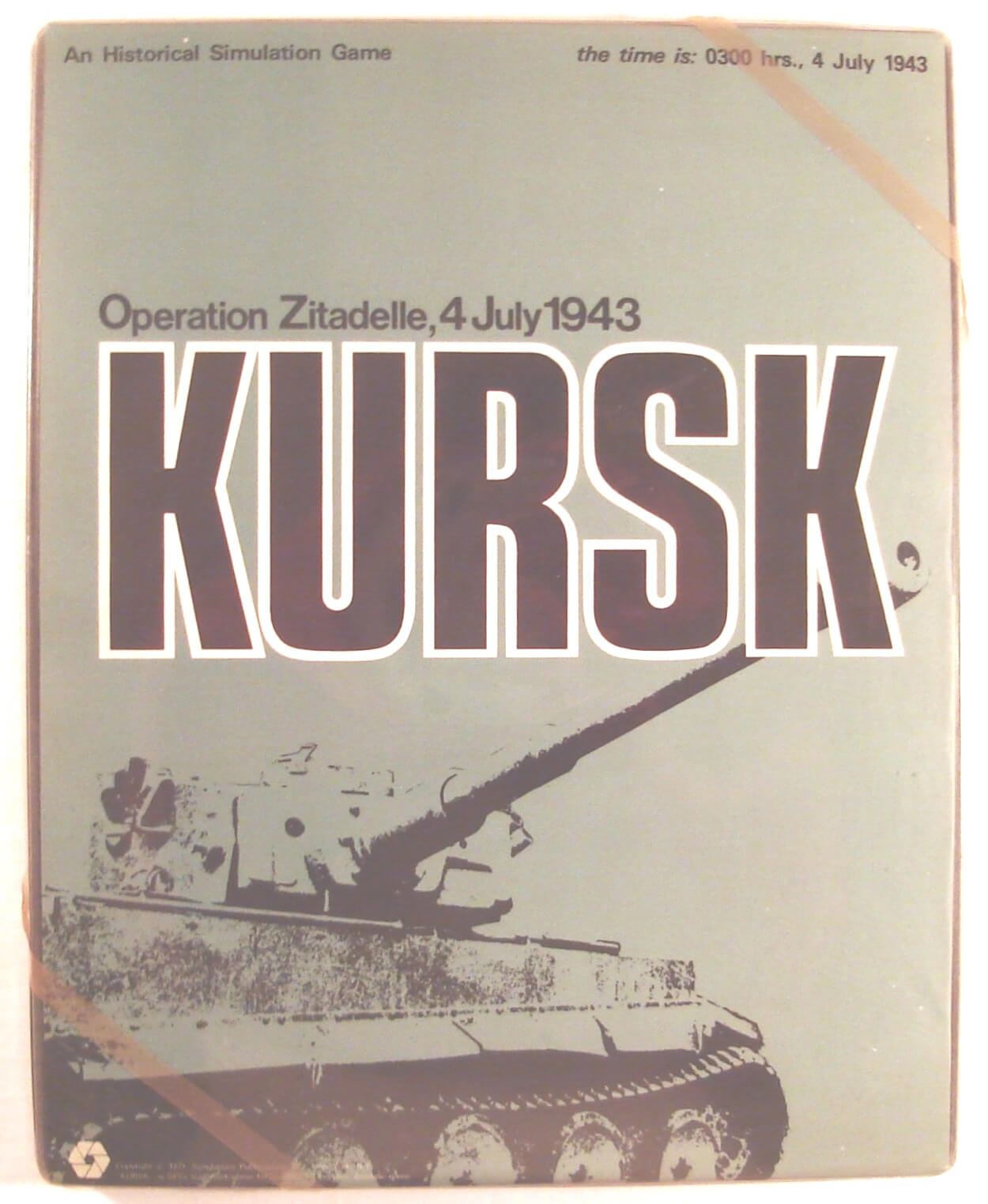


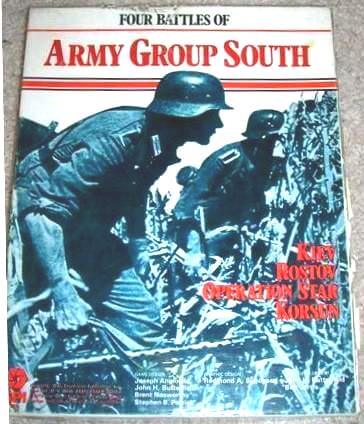
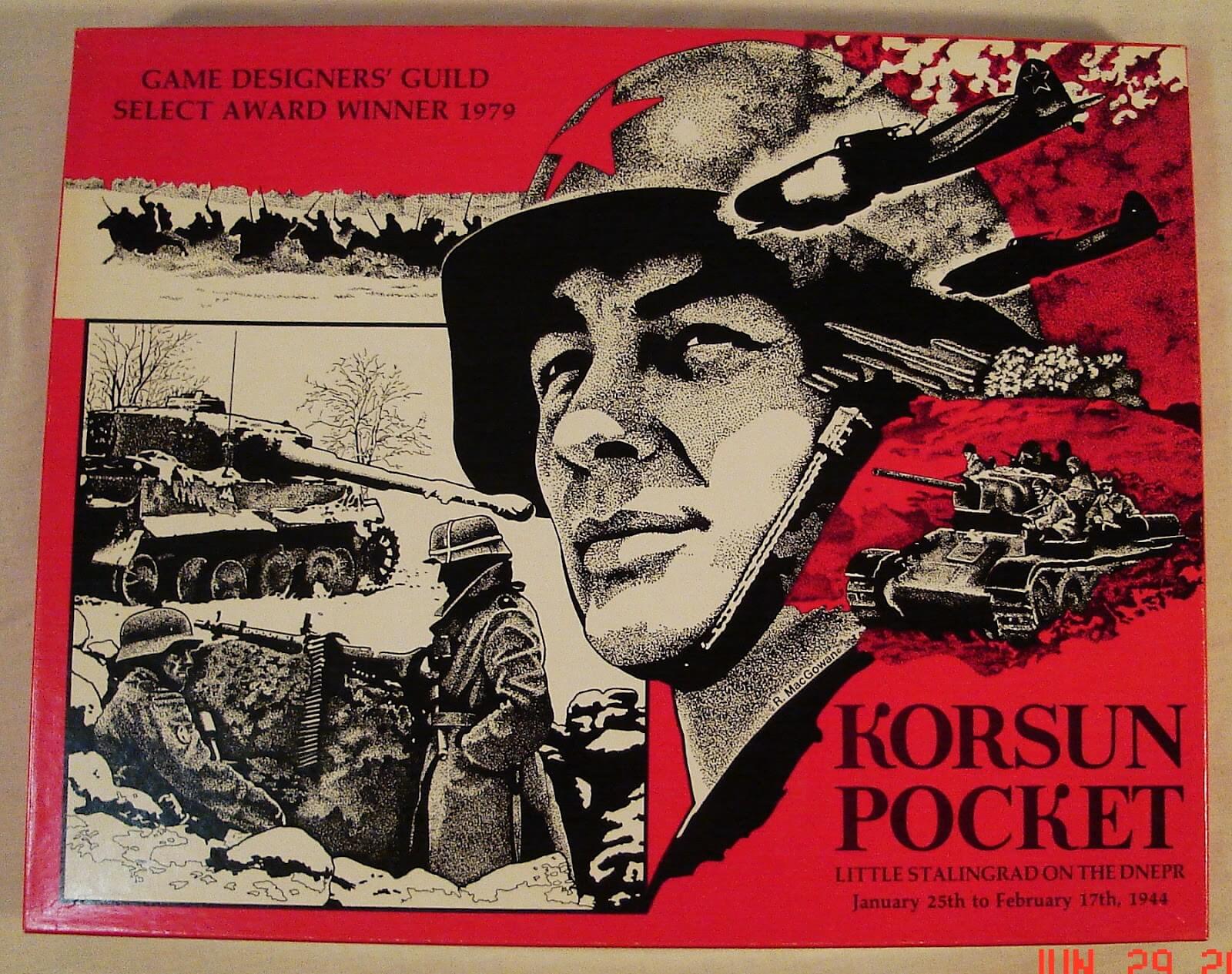


A great article. BUT “The LA BATAILLE Series of Napoleonic games from Marshal/Martial Enterprises is one example of a durable game platform — introduced in the early 1970s — that has held up relatively well over the years.”
Relatively???? It is still going very strong with both ME and Clash of Arms putting out new games annually. I love it to death, and have been playing since I got the original Moscowa in 1980.